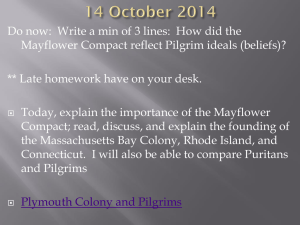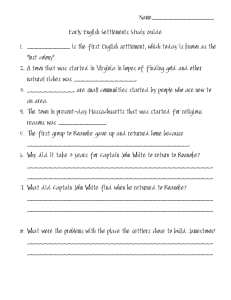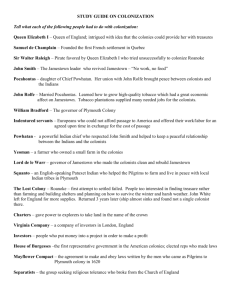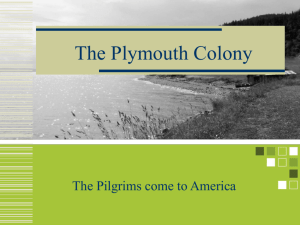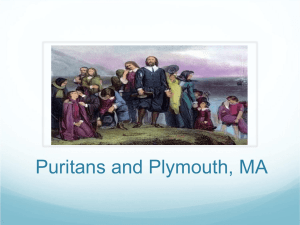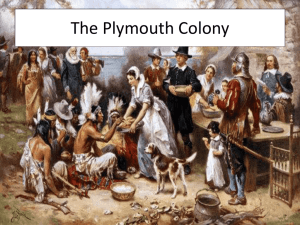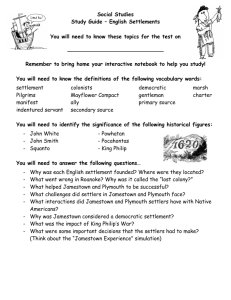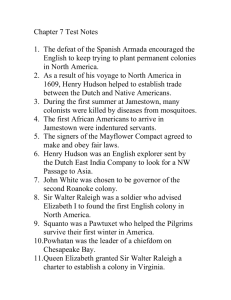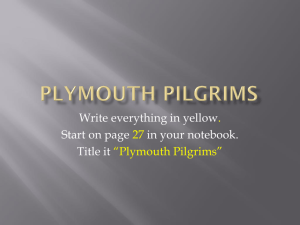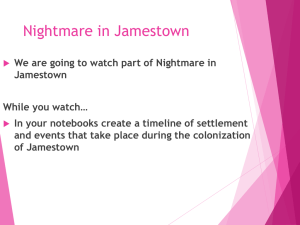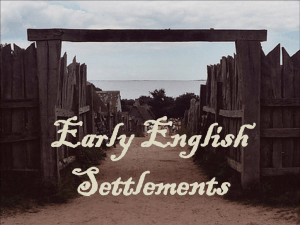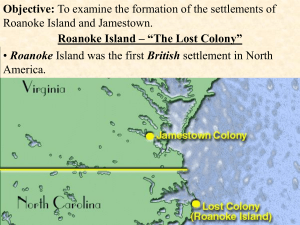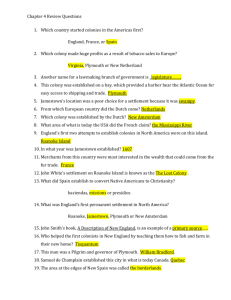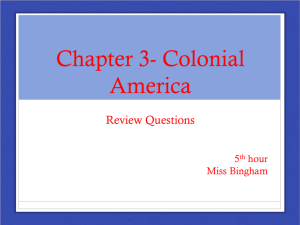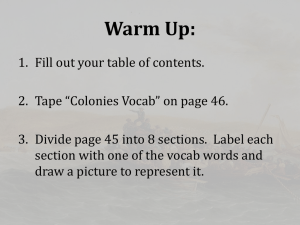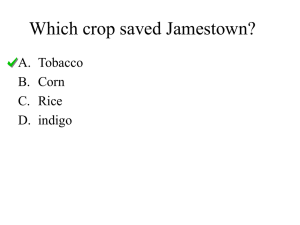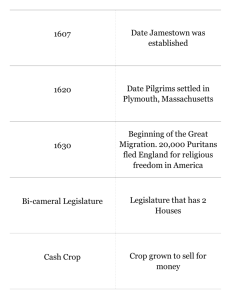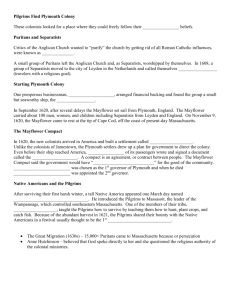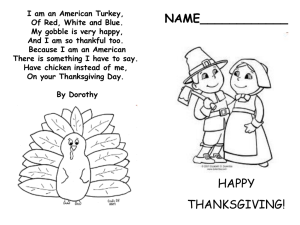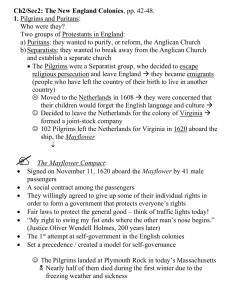Early English Settlements Study Guide (3.1, beginning 3.2)
advertisement
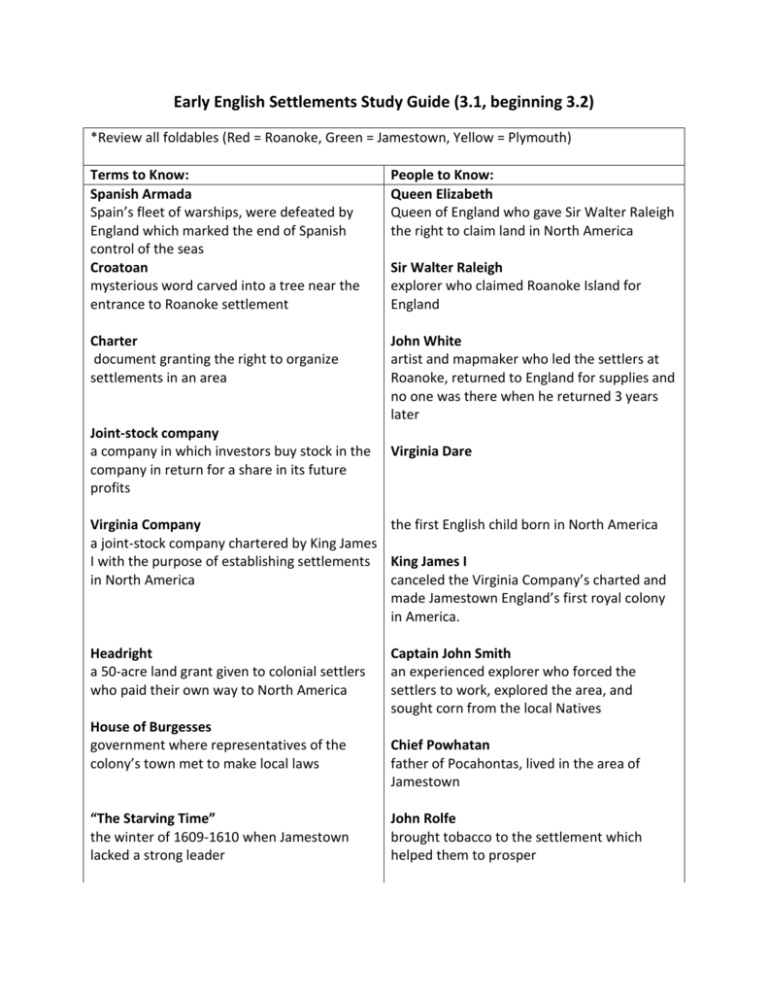
Early English Settlements Study Guide (3.1, beginning 3.2) *Review all foldables (Red = Roanoke, Green = Jamestown, Yellow = Plymouth) Terms to Know: Spanish Armada Spain’s fleet of warships, were defeated by England which marked the end of Spanish control of the seas Croatoan mysterious word carved into a tree near the entrance to Roanoke settlement People to Know: Queen Elizabeth Queen of England who gave Sir Walter Raleigh the right to claim land in North America Charter document granting the right to organize settlements in an area John White artist and mapmaker who led the settlers at Roanoke, returned to England for supplies and no one was there when he returned 3 years later Joint-stock company a company in which investors buy stock in the company in return for a share in its future profits Sir Walter Raleigh explorer who claimed Roanoke Island for England Virginia Dare Virginia Company the first English child born in North America a joint-stock company chartered by King James I with the purpose of establishing settlements King James I in North America canceled the Virginia Company’s charted and made Jamestown England’s first royal colony in America. Headright a 50-acre land grant given to colonial settlers who paid their own way to North America House of Burgesses government where representatives of the colony’s town met to make local laws “The Starving Time” the winter of 1609-1610 when Jamestown lacked a strong leader Captain John Smith an experienced explorer who forced the settlers to work, explored the area, and sought corn from the local Natives Chief Powhatan father of Pocahontas, lived in the area of Jamestown John Rolfe brought tobacco to the settlement which helped them to prosper The Mayflower Boat the pilgrims used to arrive at North America Pocahontas married John Rolfe, which improved the English relations with the Natives “Strangers” Puritans common people on the Mayflower, made up of servants, craftspeople, and poor farmers. They hoped to find a better life in America. protestants who wanted to reform the Anglican church Mayflower Compact Separatists a formal document, written in 1620, that provided law and order to the Plymouth colony. protestants who wanted to leave the Anglican Church and set up their own churches Pilgrims First Thanksgiving meal split between the Native Americans and the Pilgrims as a sign of their harmony with each other. separatists who journeyed to the colonies during the 1600s for a religious purpose William Bradford historian and leader of the Mayflower Squanto Native American who befriends the colonists at Plymouth Essential Questions: 3.1 – Why did the English settle in North America? Set up a base in the “new world” Search for gold and establish trade in fish and furs 3.2 (beginning) – Why did the Separatists and Puritans leave England and settle in North America? They wanted to reform the Anglican Church and set up their own churches Freedom of religion
